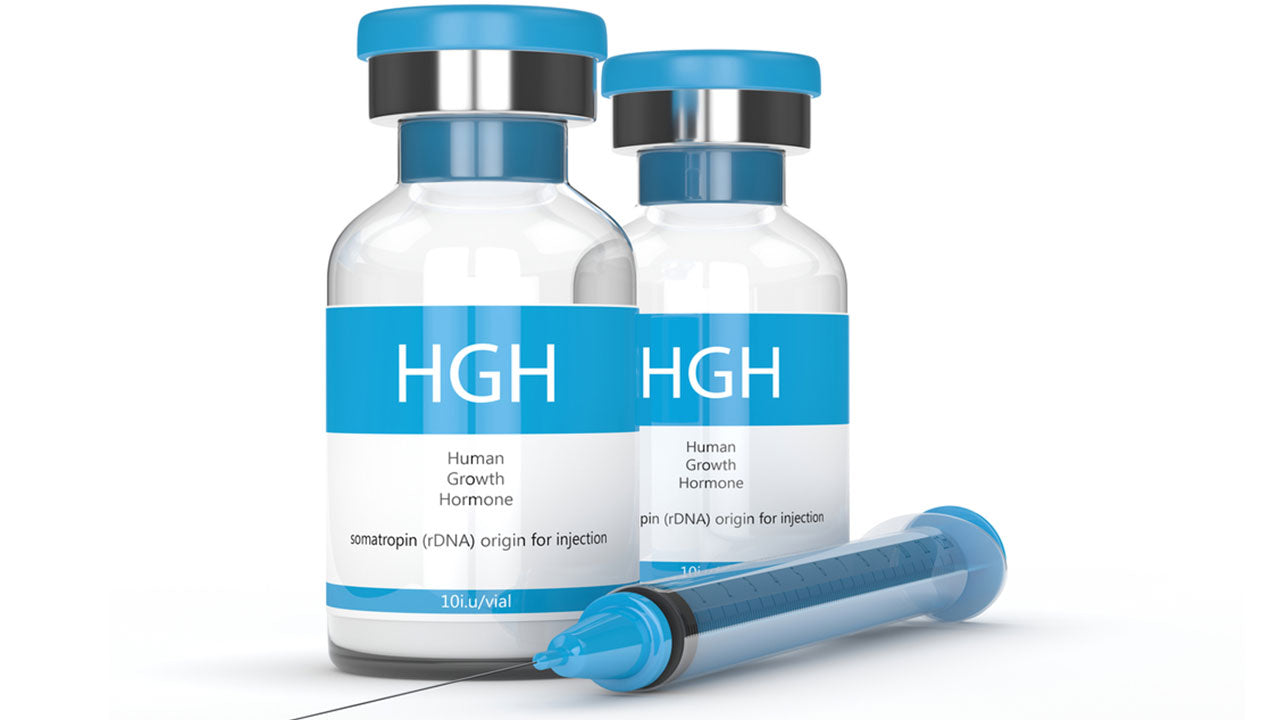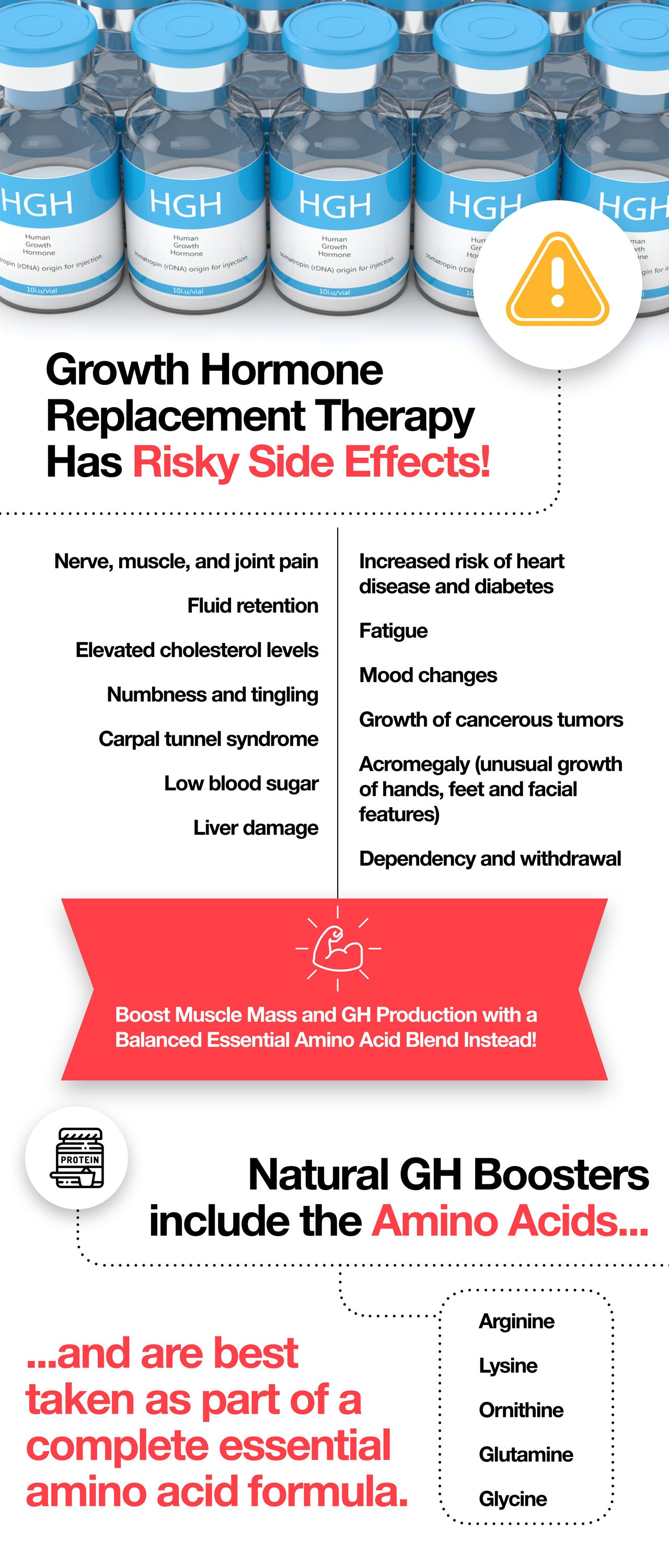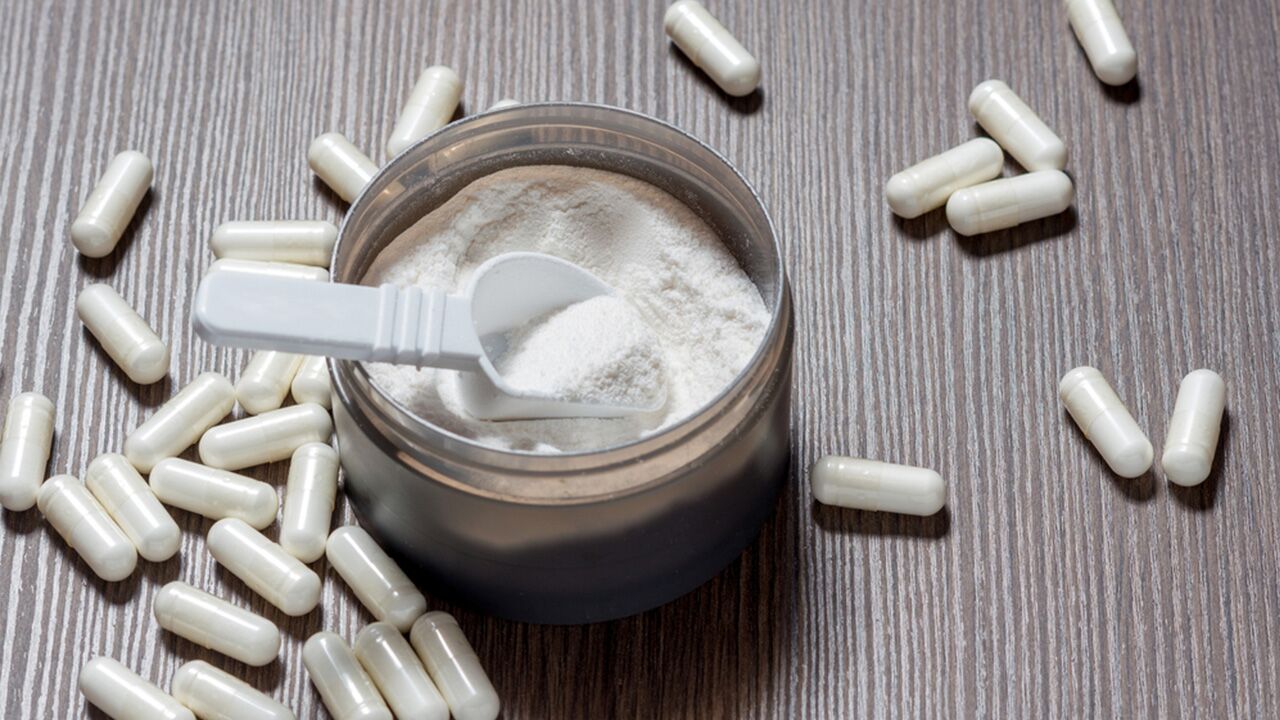A Beginner's Guide to Amino Acids and Growth Hormone
 By: by Amino Science
By: by Amino Science

Public interest in growth hormone seems to be constantly increasing. And based on recent studies, it seems that an improved understanding of the relationship between amino acids and growth hormone may be the key to unlocking the benefits of increased growth hormone production.
In technical terms, growth hormone (GH), also called human growth hormone (hGH) in reference to human use, can be categorized as a peptide hormone that sparks growth, cell reproduction, and cell regeneration. As you may already know, or be able to guess from that definition, studies link growth hormone to a plethora of desirable effects, especially when it comes to athletic performance and aging.
It appears that growth hormone could be the key to remaining strong and healthy as we grow older. But how exactly does growth hormone work? And why has supplemental growth hormone been banned for all off-label use? And last but not least, what role could amino acids play in safely and naturally increasing your growth hormone levels?
Read on to find out.
How Growth Hormone Works
Growth hormone is, as the name tells you, a hormone. The pituitary gland controls growth hormone production (as well as most hormone production) and also regulates growth hormone release. GH release occurs in short bursts every 3 to 5 hours, then dissipates rapidly. Testing indicates that serum growth hormone levels peak about an hour after you fall asleep.
Growth hormone regulates your growth and development during your early years. When you enter puberty, your GH levels hit their highest point and stimulate increases in muscle mass and bone density. Over the course of your lifetime, growth hormone influences your body temperature, sugar and fat metabolism, and heart function.
Researchers have found that growth hormone increases the amount of protein allocated to your muscles, which spurs muscle growth. It also pulls fat from your body's stores and transports it into your bloodstream where it can be burned for energy. Recent studies have also linked higher levels of serum growth hormone to better sleep quality, more resilient bones, and increased libido. And there's evidence indicating that increased hGH levels (in conjunction with a good supply of collagen) help keep your skin taut and glowing.
Top Uses for Growth Hormone Replacement Therapy
As we've discussed, human growth hormone is a naturally occurring substance. However, scientists have found ways to produce synthetic hGH.
Doctors use synthetic hGH primarily to treat delayed or stunted growth in both children and adults. Some medical causes of growth issues include:
- Low birth weight
- Turner syndrome
- Prader-Willi syndrome
- Chronic kidney disease
- Impaired hGH production
- Pituitary tumors
- Muscle wasting disease
Other legitimate medical uses for synthetic hGH include the treatment of short bowel syndrome and muscle wasting caused by HIV or AIDS.
Receiving hGH injections can elevate growth hormone levels, resulting in benefits such as:
- Increased capacity for physical exertion
- Better bone density
- Greater muscle mass
- Decreased body fat
Understandably, those benefits appeal to many people with normal production of hGH too.
In fact, growth hormone is one of the most popular performance-enhancing drugs. Athletes dope with hGH, sometimes in combination with anabolic steroids, in order to rapidly and dramatically build muscle mass and boost their endurance and performance.
The simple fact that the use of growth hormone as a performance enhancer is banned by all anti-doping governing bodies indicates it can induce some beneficial gains. Scientific studies have shown this to be particularly true when it comes to amplifying the effects of weight training.
Growth hormone replacement therapy is also a sought-after anti-aging treatment. Research tells us that growth hormone secretion declines as you age. And as you age, your overall muscle mass decreases and body fat percentage increases. Although there is no proof that decreased growth hormone concentrations cause these changes in body composition, proponents believe that growth hormone replacement therapy can reverse these age-related changes.
The Search for the Best Growth Hormone Booster Is On
Even if you aren't in a position to have to worry about the rules set in place by governing bodies, it's a good idea to steer clear of off-label use of synthetic hGH. Even when prescribed and injected by a doctor who's also monitoring your overall health, growth hormone replacement therapy can have side effects like:
- Nerve, muscle, and joint pain
- Fluid retention
- Elevated cholesterol levels
- Numbness and tingling
- Carpal tunnel syndrome
- Low blood sugar
- Liver damage
- Increased risk of heart disease and diabetes
- Fatigue
- Mood changes
- Growth of cancerous tumors
- Acromegaly (unusual growth of hands, feet, and facial features)
- Dependency and withdrawal
Taking illicit hGH is especially risky, since there's no way to be absolutely sure of the composition of those products. And beware of any growth hormone supplements designed to be taken orally, since your body cannot utilize an oral dose of growth hormone.
Since it can be expensive and risky to utilize growth hormone replacement therapy for performance boosting and anti-aging purposes, much effort has been made to identify a nutritional approach to stimulating growth hormone release. Nutritional stimulation of growth hormone secretion would achieve the benefits of growth hormone replacement therapy within the regulations of drug enforcement agencies and without any concerning side effects.
What Science Tells Us About Amino Acids and Growth Hormone
Amino acids have been the primary focus of efforts to identify nutritional approaches to stimulating growth hormone release.
Based on a wealth of anecdotal evidence, many athletes and other individuals interested in remaining vibrant as they age have already used amino acid supplementation to boost their hGH levels. There's also mounting data from scientific studies indicating that amino acid supplements function as growth hormone secretagogues, meaning they induce GH release.
It's quite clear that the intravenous administration of certain amino acids results in significant growth hormone release. For example, doctors routinely use an intravenous arginine infusion test to check the pituitary gland's GH response. In healthy individuals, the injection of arginine (L-arginine) leads to a 52% increase in concentrations of arginine in the bloodstream, which in turn results in significantly increased GH concentrations.
Intravenous injections of ornithine (L-ornithine) also spur growth hormone release. Studies show it can result in a 5-fold increase in serum growth hormone concentrations within just 45 minutes.
However, the intravenous arginine infusion test results in much higher arginine concentrations in the blood than can be achieved with oral consumption. This is because orally ingested arginine is rapidly cleared by the liver, which blunts the increase in arginine concentration in the blood.
Coupled with the fact that oral consumption of a large amount of arginine causes diarrhea and other symptoms of GI distress, the doses of oral arginine that have been tested as potential growth hormone boosters don’t measure up to intravenous infusions of arginine.
Oral consumption results in much lower concentrations of arginine in the blood than those achieved during the intravenous arginine test. Consequently, an oral dose of arginine only stimulates growth hormone production in certain circumstances.
Oral supplementation with arginine has been tested both alone and in combination with other amino acids. Trials looking at the use of amino acids to stimulate the release of growth hormone have been run with combinations of arginine and ornithine, and arginine and lysine. Lysine has been tested alone as well. In addition, glutamine and glycine have each been tested as growth hormone stimulants.
The results of recent studies have been inconsistent. It appears that regardless of the amino acid combination, some studies report positive results while others fail to find a significant effect.
Some findings appear to indicate that the time of day when a person takes the amino acids may determine whether, and to what extent, they impact GH concentrations.
For example, some scientists have hypothesized that arginine may only act as a growth hormone secretagogue at night. During one study, researchers gave participants 250 mg/kg/day of oral arginine aspartate for a week. Then they measured growth hormone and prolactin secretion over 24 hours by using methods such as radioimmunoassay analysis of blood samples taken every 30 minutes. Those results were compared to data obtained from the same subjects under identical conditions after a week of placebo supplementation. All subjects had growth hormone levels during slow wave sleep that were about 60% higher after a week of arginine supplementation than after a week of taking the placebo.
Using a combination of arginine and ornithine in conjunction with resistance training seems to deliver fairly consistent results as well. It's not yet entirely clear, however, if those benefits have to do with growth hormone release.
For a double-blind study published in the Journal of Sports Medicine and Physical Fitness, participants completed a 5-week progressive strength-training program. Half the participants took an amino acid supplement that combined 2 grams of L-arginine and 1 gram of L-ornithine, while the others took a placebo.
The subjects who took the amino acid blend scored far higher for total strength as well as lean body mass than those who took the placebo. The authors concluded that both arginine and ornithine can, in conjunction with a high-intensity strength-training program, substantially increase strength, muscle growth, and fat loss in a short period of time. It also seems that the amino acids supported muscle recovery and prevented inflammation related to tissue breakdown.
However, that study did not specifically measure growth hormone production, so there's no way to know for sure whether that was, indeed, the driving force behind the reported benefits. Plus, other studies have been unable to duplicate those results for individuals with lower activity levels as well as for older individuals.
To date, no combination of amino acids has proved to be universally beneficial in terms of increasing growth hormone concentrations. In all the scientific studies, there have been people who responded and people who didn’t. Furthermore, there is very limited data indicating that stimulation of growth hormone release by one or two individual amino acids translates to an increased rate of protein synthesis in muscle.
A Different Angle on the Benefits of Growth Hormone
The reason stimulation of growth hormone release with one or two individual amino acids doesn’t lead to significant muscle growth is that all the essential amino acids are required to produce a complete muscle protein.
Furthermore, it is not growth hormone, per se, that stimulates muscle protein synthesis. Although growth hormone may have some direct metabolic effects, its main action is to encourage the expression of insulin-like growth factor-1 (IGF-1). IGF-1 is a potent stimulator of muscle protein synthesis if expressed inside the muscle cell. It is not clear whether individual amino acids increase the expression of IGF-1 in muscle, but studies indicate that essential amino acids can work synergistically to increase IGF-1 function inside muscle cells.
An important study in which older individuals were given either a balanced formulation of all the essential amino acids or a placebo for 3 months showed clearly that both muscle mass and muscle protein synthesis increased for the amino acid group compared to the placebo group. Participants supplementing with a complete essential amino acid formula expressed more IGF-1 inside their muscle cells, which resulted in favorable changes to their lean body mass. Muscle protein synthesis not only increased when essential amino acid levels in the blood shot up after consumption, but also in the basal state between meals. This means that IGF-1 is released continuously into the muscle, where it increases the capacity to make new muscle protein, both day and night.
Activating Growth Hormone with Essential Amino Acids
What we’ve seen thus far is that for some people, growth hormone release can be stimulated by consumption of a variety of amino acids—arginine, lysine, ornithine, glutamine, glycine—either alone or in combination. But it's clear that many factors influence the effect amino acids have on hGH production. Responses in sedentary individuals, including older individuals, are much less consistent.
The inability of individual amino acids to stimulate muscle protein synthesis in every circumstance and in every human is likely due to the fact that all essential amino acids are required to make new muscle protein. Dietary supplementation with a balanced mixture of essential amino acids, such as with Amino Co's Active Aging blend Life, has the advantage over individual amino acids because muscle protein synthesis is directly stimulated by essential aminos, and the increase in IGF-1 in muscle stimulates the synthesis of new muscle protein 24 hours a day.


Up to 25% off Amino
Shop NowTAGS: knowledge
Join the Community
Comments (0)
Most Craveable Recipes




 833-264-6620
833-264-6620



















